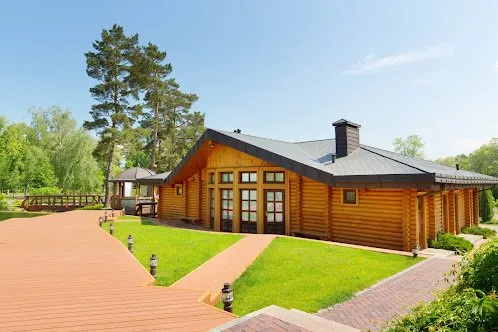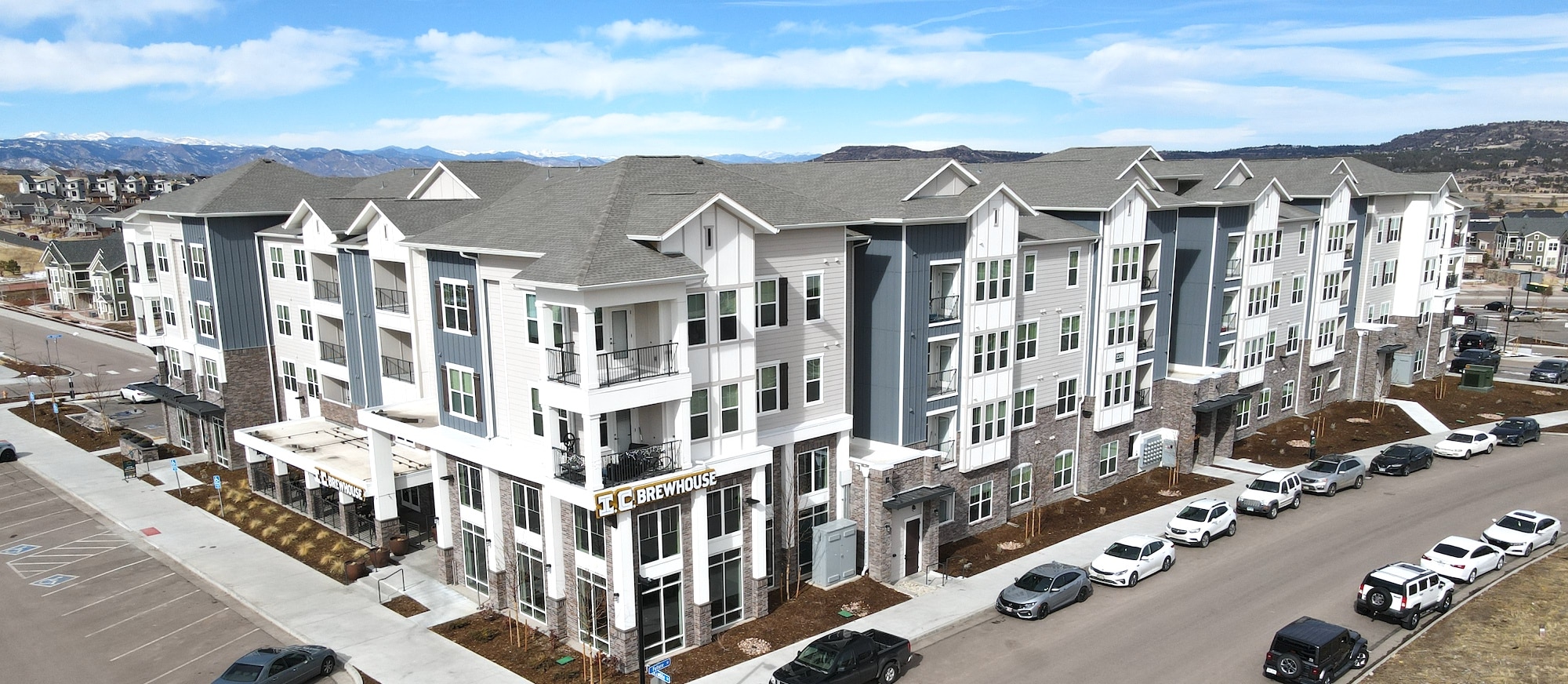When it comes to building or renovating a property, the roof is one of the most significant components to consider for eco-friendly practices. Sustainable roofing minimizes environmental impact and offers long-term benefits like energy efficiency, durability, and cost savings.
In this blog, we explore the most popular sustainable roofing options available for construction projects and how they can help you create a greener, more efficient building.
Table of Contents
The Importance of Sustainability in Roofing Construction
Sustainability in roofing is becoming increasingly important as the construction industry shifts towards eco-friendly practices. Choosing sustainable roofing materials and methods helps reduce a building’s environmental impact while enhancing its long-term performance and value. These options contribute to energy efficiency, resource conservation, and overall environmental responsibility, making them a crucial consideration for modern construction projects.
Here are some of the most notable advantages of implementing sustainable roofing:
- Energy Efficiency: Sustainable roofing materials often have reflective properties or insulation benefits, reducing the need for excessive heating and cooling, which in turn lowers energy consumption and costs.
- Environmental Impact: Using eco-friendly roofing materials, such as those made from recycled or renewable resources, reduces the depletion of natural resources and minimizes waste, contributing to a healthier planet.
- Long-Term Durability: Many sustainable roofing options are designed to last longer and require less maintenance, reducing the frequency of replacements and the associated environmental and financial costs.
- Improved Air Quality: Certain sustainable roofing options, like green roofs, can help improve air quality by filtering pollutants and providing additional greenery in urban areas.
- Enhanced Property Value: Buildings with sustainable features, including eco-friendly roofs, are often more attractive to buyers and tenants, leading to increased property value and marketability.
- Compliance with Regulations: As environmental regulations become stricter, sustainable roofing can help ensure compliance with local building codes and potentially qualify for green building certifications and incentives.
- Reduced Urban Heat Island Effect: Sustainable roofing materials, particularly cool and green roofs, help mitigate the urban heat island effect by reflecting sunlight and reducing surface temperatures in densely populated areas.
Popular Sustainable Roofing Options for Your Construction Project
When planning a construction project with sustainability in mind, selecting the right roofing material is essential. With numerous eco-friendly roofing materials available, it’s important to explore the popular options and understand how each one can enhance your construction project’s sustainability.
Green Roofs

Green roofs, also known as living roofs, involve installing vegetation on the roof surface. These roofs provide excellent insulation, reduce stormwater runoff, and contribute to better air quality. They are ideal for urban environments, where they can create green spaces and reduce the heat island effect.
Cool Roofs
Cool roofs are designed to reflect more sunlight and absorb less heat compared to standard roofing materials. They are typically made with reflective materials or coatings that reduce the roof’s temperature, leading to lower energy costs for cooling and a reduced carbon footprint. Cool roofs are especially beneficial in hot climates.
Solar Roofs
Solar roofs integrate solar panels directly into the roofing material, allowing the roof to generate electricity from sunlight. This option provides a renewable energy source and contributes to the overall sustainability of the building. Solar roofs are an excellent choice for projects aiming to achieve energy independence.
Metal Roofs

Metal roofs are known for their durability and recyclability. They are often made from recycled materials and can be recycled again at the end of their lifespan. Metal roofs are highly reflective, which helps reduce cooling costs, and they offer long-term resistance to weathering and damage.
Recycled Shingle Roofs
Recycled shingle roofs are made from repurposed materials such as rubber, plastic, or wood fiber. Energy-efficient shingles for roofs provide the appearance of traditional roofing materials while offering the benefits of sustainability. Recycled shingles are a cost-effective and eco-friendly option that reduces the demand for new raw materials.
Clay and Concrete Tiles

Clay and concrete tiles are natural materials that offer excellent durability and thermal performance. They are also energy-efficient, fire-resistant, and have a long lifespan, making them a sustainable choice for many construction projects. Additionally, clay and concrete tiles can be recycled after their use.
Wood Shingles and Shakes
Wood shingles and shakes, particularly those made from sustainably harvested wood or reclaimed lumber, are a renewable roofing option. They provide natural insulation and a rustic aesthetic, making them a popular choice for eco-conscious homeowners. However, they do require regular maintenance to ensure longevity.
Synthetic Roofing Materials
Synthetic roofing materials are designed to mimic the appearance of natural materials like slate or wood but are made from recycled or sustainable materials. These options offer durability, lower maintenance, and a reduced environmental impact compared to their natural counterparts. Synthetic roofing is a versatile and eco-friendly choice for various construction projects.
No matter what type of eco-friendly option you choose, Tectum Roofing’s new construction roofing services can make your sustainable roofing vision a reality.
Which Sustainable Roofing Option Should You Choose?
Choosing the right sustainable roofing option for your construction project is a crucial decision that impacts both the efficiency of your building and its environmental footprint. With a variety of eco-friendly roofing materials available, it’s essential to consider factors such as your project’s location, budget, and design requirements.
Understanding these key considerations can help you select the most suitable roofing solution that aligns with your sustainability goals and provides long-term benefits for your property:
1. Climate and Weather Conditions
The climate in your area plays a significant role in determining the best sustainable roofing option. Consider how different materials perform under various weather conditions, such as extreme heat, heavy rainfall, or snowfall. Choose a roofing material that can withstand the local climate while maintaining energy efficiency.
2. Budget and Long-Term Savings
While some sustainable roofing options may have a higher upfront cost, they often provide significant long-term savings through energy efficiency and durability. Evaluate your budget and consider the potential return on investment over the lifespan of the roof, including reduced energy bills and maintenance costs.
3. Environmental Impact
Assess the environmental impact of the roofing materials you’re considering. Look for options that are made from recycled or renewable resources, have low carbon footprints, and can be recycled at the end of their lifespan. Choosing a material with minimal environmental impact helps contribute to overall sustainability.
4. Energy Savings
Consider the energy efficiency of the roofing material. Some sustainable roofing options, like cool roofs or green roofs, are designed to reduce heat absorption and lower energy consumption for cooling and heating. Choose a roofing material that enhances the energy efficiency of your building, leading to long-term cost savings.
5. Aesthetic and Architectural Compatibility
Ensure that the sustainable roofing option you choose complements the architectural style and design of your construction project. The right material should not only be eco-friendly but also align with the aesthetic vision of the building, enhancing its overall appearance and value.
6. Durability and Maintenance
Evaluate the durability and maintenance requirements of different sustainable roofing materials. A longer-lasting roof reduces the need for frequent replacements, which in turn minimizes environmental impact. Choose a material that offers both durability and ease of maintenance to ensure your roof remains sustainable throughout its lifespan.
7. Local Building Codes and Regulations
Before selecting a sustainable roofing option, check local building codes and regulations to ensure compliance. Some regions may have specific requirements or incentives for using eco-friendly materials, which can influence your choice and potentially offer additional benefits for your project.
If you need help selecting an eco-friendly roofing system that aligns with your construction vision, Tectum Roofing is here to help.
Install Eco-Friendly Roofing With Tectum Roofing
At Tectum Roofing, we understand the critical importance of eco-friendly roofing and how it benefits both property owners and the environment. Our team is committed to using sustainable roofing materials that provide long-lasting protection and contribute to energy efficiency and a reduced carbon footprint.



